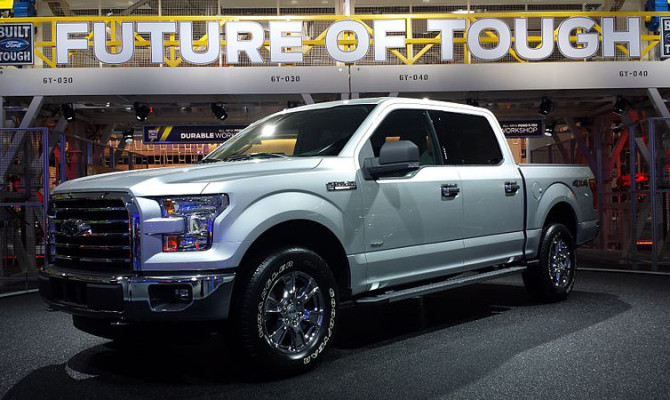“The all-new body features military grade, aluminum alloy sitting on a high strength steel frame…”
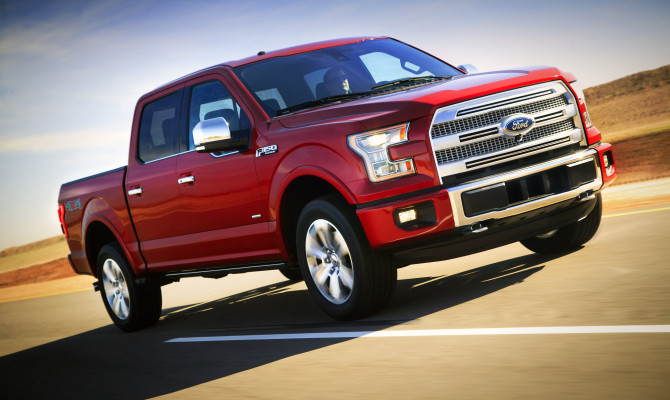
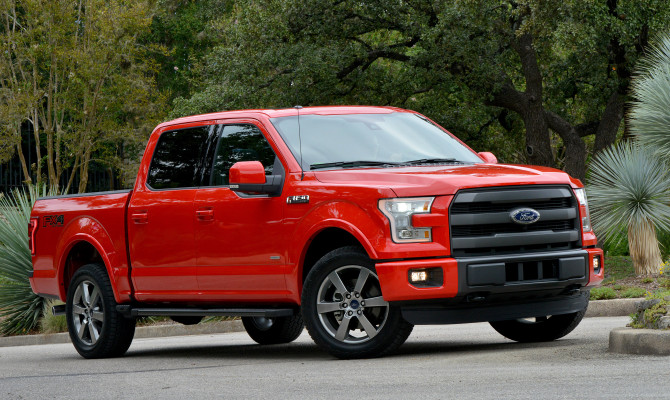
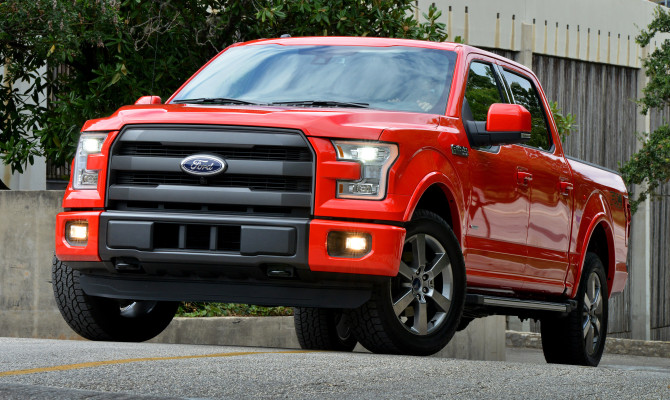
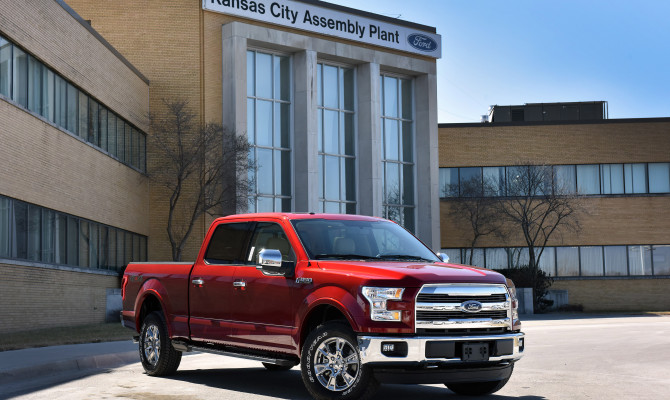
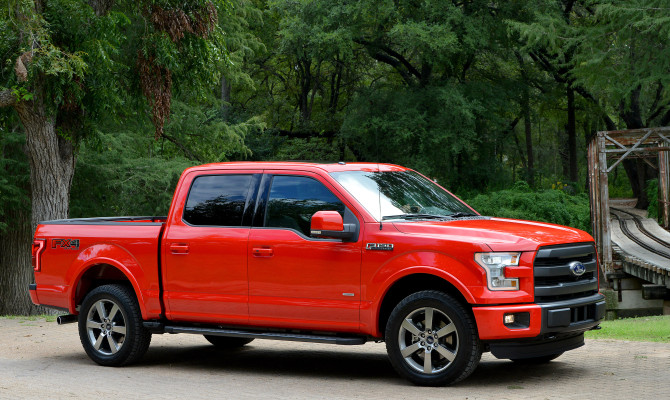
Ford is entering a brave new world with its extensive use of aluminum in its brand new F150.
It remains to be seen how many of its competitors will leap on the aluminum bandwagon but one thing for sure is this move will shake up the light-duty truck world.
Looks:
The all-new truck features smooth body lines with oversized fender flares, sleek headlights form part of the large oversized grille, with a blended in front bumper. These features truly stand out when you see this new F150 driving down the road and clearly differentiate it from the rivals. It’s very similar to the Atlas concept vehicle that was first shown a couple of years ago though it has been toned down a little in this latest version of the best-selling pickup in Canada.
The all-new body features military grade, aluminum alloy sitting on a high strength steel frame. The intent here is to create less overall weight without sacrificing strength. However, it is a bold move that may come back to haunt Ford. Real world driving of this vehicle will produce all kinds of scenarios. What happens when you need to fix the body panels, does the cost escalate to the point it is easier to write it off rather than repair? How will it hold up against constant towing or off-road use?
Time will tell, but you have to figure Ford has done some homework before unleashing the beast.
In The Cab:
It’s a spacious cab with a little more door width than the last version. You’ve got to like the 10-position adjustable driver’s seat, which is heated and ventilated. You won’t want to get out once you have arrived at the work site!
The Supercab and Supercrew models offer a fully flat floor providing ample cargo space. The beltline of the doors has been lowered a little and the front pillars are moved forward giving exceptional visibility. An available 8-inch LCD productivity screen on the instrument cluster can be set up to provide information tailored to your needs. Fuel consumption, towing, off-road applications offer precise information while driving. There is an optional 400-watt power inverter to can power your 110v items and, surely, that will become one hot option because of today’s workplace demands. Overall, I was impressed with the cab, very comfortable, good visibility and easy access to all the dash functions.
The panoramic roof option gives the truck a different feeling driving down the road. When the sun is shining the natural light warms the cab, it almost gives you the feeling you’re driving a convertible. I said almost.
Safety First:
Standard are front airbags with front driver and passenger seat mounted side airbags, safety canopy side curtain airbags.
Roadworthy:
My tester for the week was a SuperCrew short box version, although that sounds like an average size truck, it is not. The length of this vehicle is 6190 mm and parking in a small lot can be challenging. Backing in is your safest bet and with the use of the backup camera you are sure to get every inch of space available.
Steering is incredibly responsive and the ride is firm yet comfortable. Immediate power when you need it and plenty available to get this truck up to highway speed.
I quite enjoyed the drive and although my day was filled with errands, I still managed to relax as a drove throughout the city, only to have my bubble burst as I ran into never ending construction.
Verdict:
I found the new F150 to be slight improvement over the previous version with most of the improvements coming from the interior. The new body design is more of a personal preference and I think it will take me a while longer to come around. Give it a year and I will let you know if it was a hit or a miss.
Power:
Four engine choices here. 2.7L EcoBoost V6 with 325 horsepower and 375 lb-ft of torque, 3.5L EcoBoost V6 with 365 horsepower and 420 lb-ft torque, 3.5L Ti-VCT V6 with 282 horsepower and 253 lb-ft of torque and a 5.0L Ti-VCT V8 with 385 horsepower and 387 lb-ft
Pump frequency:
4X2
2.7L 12.2/9.2 L/100 km (city/highway)
3.5L 13.7/9.9 L/100 km (city/highway)
3.5L Ti 13.2/9.6 L/100 km (city/highway)
5.0L 15.5/10.6 L/100 km (city/highway)
4X4
2.7L 13.3/10.4 L/100 km (city/highway)
3.5L 14.2/10.4 L/100 km (city/highway)
3.5L Ti 13.9/10.5 L/100 km (city/highway)
5.0L 16.0/11.3 L/100 km (city/highway)
Warranty support:
Basic coverage: 3 year/ 60,000 km
Powertrain: 5 year/ 100,000 km
Sticker price:
XL – $24,899
XLT – $29,299
Lariat – $44,099
King Ranch – $60,499
Platinum – $62,499
Ford’s claims will have to play out on roads, across Canada, in the coming years but from what I’ve seen in Texas, I’d say “Giddy Up!”
(more…)
Sam Walton, founder of Walmart and one of the richest men in America, drove the same 1979 F-150 Custom 4×4 to work every day until he died in 1992…
written by B. Mitchell Carlson
Driveway Canada
**********
The F-150 has been the best-selling pickup truck since 1978.
Yes, 36 years – that’s longer than a lot of you reading this have been alive. However, there are a few things about Ford’s popular pickup that most people don’t know about.
The earliest Ford pickup wasn’t an F-series…
Although Ford offered delivery-bodied cars sporadically since 1905 and one-ton trucks since 1917, its first factory-assembled “pickup” was built on April 15, 1925. The 33,795 1925 model T runabouts with pickup body sold for $281.
Why it was called the F-150…
The earliest use of the F-series name dates to the all-new 1948 Ford trucks, the half-ton model being the F-1. Ford made the jump to the F-100 name in 1953, but the F-150 nomenclature didn’t arrive until 1975. This was a model that debuted to evade emissions requirements, as it was essentially a “heavy half” pickup rated at just over 6,000 pounds gross weight – the line in the sand drawn by the EPA at the time, which required catalytic converters and subsequently unleaded gasoline. International Harvester also did this for 1975 – its final year of pickup production – making all half-ton 100 models 150s, to avoid installing catalytic converters. The final year of the F-100 was 1983 – by which time leaded vs. unleaded was a moot point.
Built all over North America, then there were two…
When introduced for 1948, The F-1 was built at all 16 U.S. assembly plants that also built Ford cars. In 1956, with trucks becoming more specialized along with the opening of the Detroit Truck Plant, Ford started consolidating truck production to fewer plants. Beginning in the late 1970s, Ford split its North American assembly groups into car and truck. Today, only two plants build all F-150s globally – the Kansas City Assembly Plant in suburban Claycomo, Missouri, and the Dearborn Truck Plant near Dearborn, Michigan.
Off-white or chrome?
The front bumper was longest-running component constantly used on every single pickup and remained unchanged during the F-series era from 1959 to 1979.
I guess he liked it…
Sam Walton, founder of Walmart and one of the richest men in America, drove the same 1979 F-150 Custom 4×4 to work every day until he died in 1992. When asked why in an interview, he stated “What am I supposed to haul my dogs around in, a Rolls-Royce?”
Today it can be seen enshrined in the company’s visitors centre/museum in Bentonville, Arkansas.
Recent Comments
- { Enjoyed your Forest of Bowland in the BMW X5M, particularly the photo of the BMW in front of the main part of Stonyhurst College where... }
- { Bantam designed the Jeep, not Willy's or Ford. The American military gave the original Bantam prototype to Willys and Ford to copy. There is plenty... }
- { All Escalades come with a 6.2-lilter V8 engine that produces 420 horsepower. A six-speed automatic is the only transmission offered and drives the rear wheels.... }
- { Alexandra is an excellent journalist. }
Popular Posts
- Journey to a ‘Sparkling’ Luxury Okanagan Resort “Four lucky readers will put a Dodge Journey’s weekend-...
- The Need For Speed: Hike Those Highway Limits More than half of those polled believe the province sho...
- Drives-U-Crazy… Erratic drivers. An early morning drive from Kelowna to Vancouver is nor...
- Readers Respond: The Pros and Cons of Increasing B.C. Speed Limits Increasing the speed limits will only increase risk to...
- Honda CR-V Review: The Compact Crossover To Get Things Done The CRV is a very stylish and aerodynamic crossover veh...


